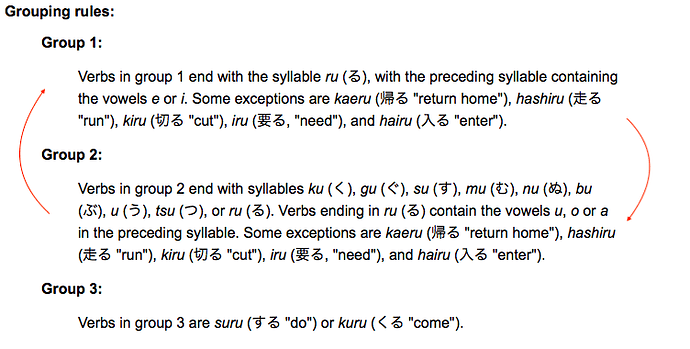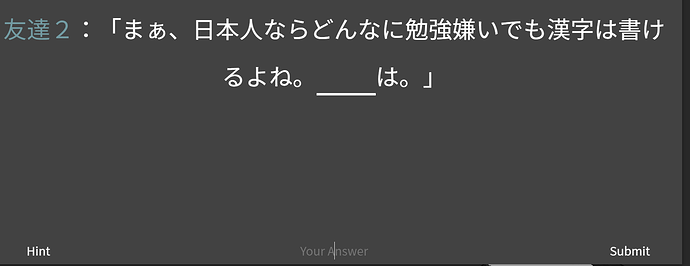@Humin Thank you for your feedback and suggestions! We are working on how the hints that appear in the answer blank display once you start typing an answer. We want it to be intuitive and unobtrusive. We hope to have something available for everyone soon.
In the future, we would like to add special “fundamental” reviews that would allow you to thoroughly practice verb conjugations and the like. In the meantime, check out this awesome site dedicated to just that!
The readings are meant to further expand upon what you have learned in the Meaning page and what you can derive from the sentences that you have read in Examples. Since Japanese grammar is best learned by seeing it being used in different contexts, we would like everyone to try to derive meaning from the sentences that they read first, before looking for additional information.
While we have the prohibitive form on Bunpro, we do not yet have the imperative form. We hope to add it soon. Cheers!
@conan
This is a cool idea! We will see if we can figure something out.
Try it out again!
@MissDagger Thank you for your feedback. I have updated the structure section of this grammar point to hopefully prevent any further confusion. Thank you for drawing this to our attention. Cheers!
@holycow273 Thank you for the kind words! The reason that we added a minimum setting for batch size is because it can work against the SRS. If you are only studying one or two items at a time, it will be easier to determine the answer since you have nothing else to compare it to. It sounds like it might be better to simply go to Grammar, Lessons and select a grammar point to study. When you feel confident that you understand the grammar point you can add it to your reviews and do not have to be quizzed on it immediately. This way, if you decide to study more than one or two grammar points, you can still quiz yourself on them, but you do not have to do it immediately (like the quiz at the end of study), you simply click reviews when you have multiple items in your review queue. Cheers!






